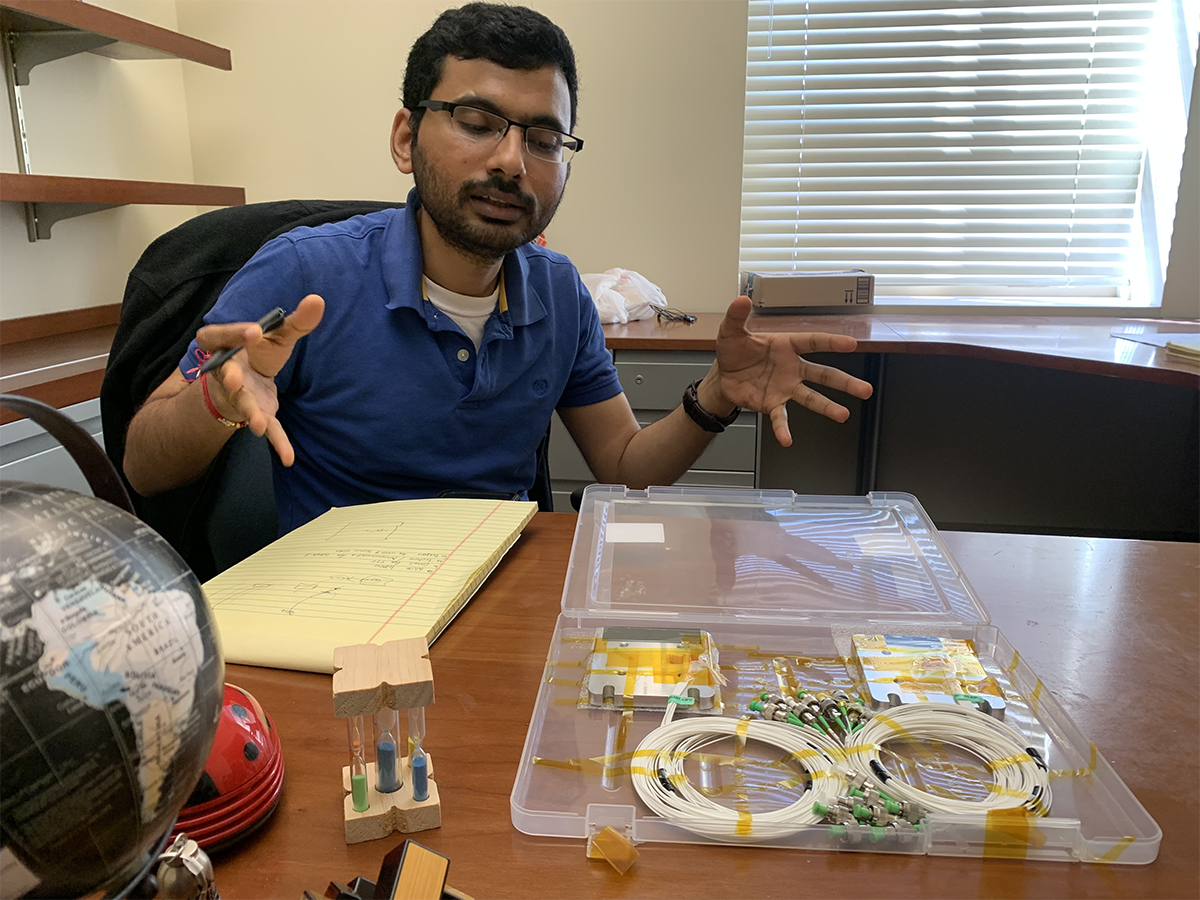When Venus and the sun aligned
Interstellar curiosity led Pradip Gatkine to UCLA

Courtesy of Pradip Gatkine
By Álvaro Castillo | December 5, 2024
In awe of NASA’s shuttle launches and the idea of probing unknown regions of space, Pradip Gatkine was brimming with excitement on an early morning in June 2004 as he made his way to the Raman Science Centre in his hometown of Nagpur, India.
Gatkine, who was 11 at the time, was on his way to observe the transit of Venus, a rare astronomical event where the second planet passes directly between Earth and the sun, appearing as a tiny black dot moving across the latter’s visage. They occur in pairs eight years apart — the next transit would take place in 2012 — but don’t repeat until more than a century later.
Inspired by his rare chance to witness a transit, Gatkine came away from the experience with a lifelong quest to understand our universe and its celestial objects.
Throughout his high school years, Gatkine regularly participated in science competitions, winning enough prize astronomy books to amass a small library over time, and even earned the opportunity to participate in the Indian National Astronomy Olympiad.
Even while pursuing a bachelor’s degree in mechanical engineering at the Indian Institute of Technology Bombay, he continued to nurture his curiosity about the cosmos.
“Every summer and winter, I would intern in some astronomical institute in India,” says Gatkine, “I believe I’ve visited or worked at most of them.”
Gatkine — who completed his graduate studies in astronomy at the University of Maryland and was named a NASA Hubble Fellow while completing postdoctoral studies at CalTech — is now an assistant professor of physics and astronomy in the UCLA College’s Division of Physical Sciences.

Courtesy of Pradip Gatkine
Spectrograph technology is already making its way into the future, showcased by this suitcase-sized model in Gatkine’s office in the Physics and Astronomy Building.
“I never imagined that I would land here,” says Gatkine, who joined the department’s faculty in March 2024. “UCLA is such an amazing place to be. It’s a powerhouse of research and it was a dream come true when I received the offer.”
At UCLA, Gatkine’s research focuses on astrophotonics, a cutting-edge field that applies photonic technologies to enhance astronomical instrumentation and observations — in other words, working with light in innovative ways to better explore space. This approach promises to revolutionize how we study the universe, enabling more precise and detailed explorations of celestial phenomena and potentially the ability to probe the habitability of planets around other stars.
In fact, Gatkine hopes that by advancing spectrograph technology, astronomical instruments will evolve similarly to how computers shrank from filling a room to fitting into your pocket. In the future, new and improved nanoscale devices could become powerful enough to detect and analyze weak photonic signals, allowing scientists to map and understand the size, distance and composition of faraway stars, planets and galaxies with greater accuracy.
“One of the main things astronomers are working on is to detect Earth 2.0, a planet like ours somewhere in the galaxy,” he says. “To do that, we’ll need to miniaturize spectrographs, which can be as large as giraffes, down to the size of a Rubik’s Cube — and they’ll need to have the capacity to detect and split light with atomic precision.”
As he pursues this work, Gatkine is particularly thrilled to have access to already-powerful technology such as the W.M. Keck Observatory — which is located at the summit of Hawaii’s dormant Mauna Kea volcano and has been designated a University of California Observing Facility — a fact that excites him as much as that morning when he traveled to the Raman Science Center to witness the transit of Venus.
But even more thrilling to Gatkine is the supportive community he’s found at UCLA.
“Having the opportunity to work with such smart and talented students and faculty, like Nobel Laureate Andrea Ghez, has been such a warming and welcoming experience,” he says. “It’s made me feel like, ‘yes, I made the right decision.’”
Gatkine believes that scientific progress is built on the collective efforts of many. As he puts it, it’s like “standing on the shoulders of giants,” and he’s hopeful that at UCLA alongside his colleagues, he’ll get closer to answering those questions that first drew him to space himself — the questions that have and will always inspire humans.
“Are we alone in the universe? How do galaxies like ours evolve and subsequently lead to the evolution of life? And ultimately, what’s in store for our planet, our galaxy, for the universe?” Gatkine says. “It’s the curiosity that has permeated time and cultures and it’s these exact questions we’re trying to address with the study of astronomy.”




